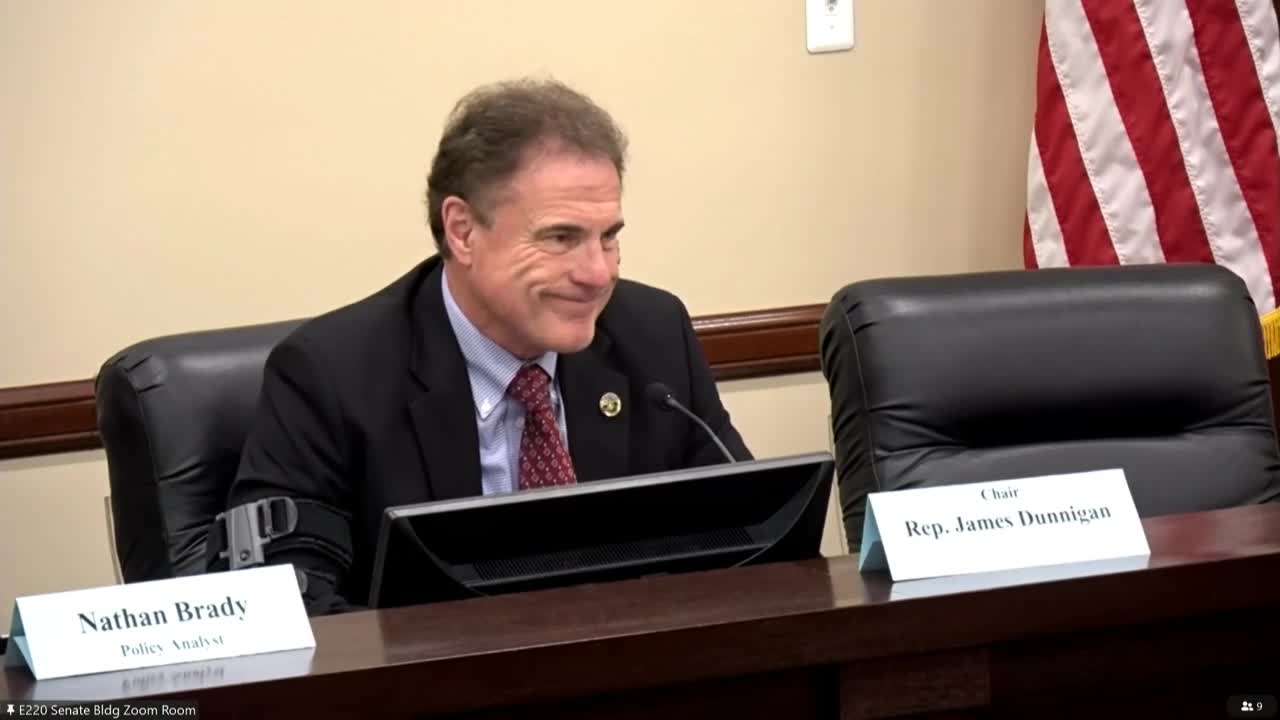Committee substitutes and then holds convention‑center reinvestment zone bill for further public review
February 25, 2025 | 2025 Utah Legislature, Utah Legislature, Utah Legislative Branch, Utah
This article was created by AI summarizing key points discussed. AI makes mistakes, so for full details and context, please refer to the video of the full meeting. Please report any errors so we can fix them. Report an error »

Senator Harper presented second substitute Senate Bill 26, a set of amendments to the state's Housing and Transit Reinvestment Zone (HTRZ) statutes and a new, narrowly drawn Convention Center Reinvestment Zone (CCRZ). The sponsor said the bill clarifies timing rules, minimum unit thresholds and some definitions in the existing HTRZ program and establishes a new financing structure limited to roughly three 10‑acre blocks that include the Salt Palace Convention Center, Abravanel Hall and the Utah Museum of Culture and Arts.
Under the CCRZ structure described by the sponsor, a public improvement district (PID) would be established for the convention center area and incremental sales and/or property tax revenues generated above a base year would be available to finance renovation, expansion and related public infrastructure. The bill limits the CCRZ to public infrastructure and the convention center‑related improvements rather than broad private development; it also contemplates use of tax‑exempt bonds and governance elements that include city and county representation on the PID board. Lincoln Schertz, representing project consultants, explained the CCRZ includes statutory protections so that any currently captured increment for other redevelopment areas would be protected and could not be captured twice.
Committee members asked about overlap with existing redevelopment or reinvestment districts and the effect on taxing entities. Witnesses explained base‑year protections lock in current distributions to taxing entities; only growth above the base year would be captured for CCRZ projects. Committee members also asked about how the CCRZ boundaries will be set; the sponsor said the HTRZ application process defines boundaries and that GOEO/HTRZ committee review would still apply.
Senator Harper and stakeholders said much of the bill’s new length derives from sales‑tax cross‑references and definitions. The sponsor, Salt Lake City and other stakeholders had negotiated much of the language in advance, the sponsor said, but portions of the bill posted late prompted members to request more public review time.
Committee action: the committee adopted the second substitute but, after additional discussion about the late release of final language and public visibility, Representative Walter moved to hold SB26 so members and the public would have more time to review. The chair announced the motion to hold carried and the bill was held for further consideration; the sponsor indicated willingness to return with the item the next day for further committee review.
Why it matters: the CCRZ would create a mechanism to direct incremental tax growth in a small, downtown area toward large convention‑center renovations and adjacent public infrastructure instead of relying on general fund appropriations or countywide tax increases. Supporters said it concentrates benefits to users of the facilities and avoids broader tax increases; critics raised concerns about transparency and the magnitude and duration of captured increments.
What’s next: the committee adopted the substitute on the record but later held SB26 to allow more time for public review and stakeholder input; the sponsor said stakeholders remained engaged and the item could return to committee promptly for reconsideration.
Under the CCRZ structure described by the sponsor, a public improvement district (PID) would be established for the convention center area and incremental sales and/or property tax revenues generated above a base year would be available to finance renovation, expansion and related public infrastructure. The bill limits the CCRZ to public infrastructure and the convention center‑related improvements rather than broad private development; it also contemplates use of tax‑exempt bonds and governance elements that include city and county representation on the PID board. Lincoln Schertz, representing project consultants, explained the CCRZ includes statutory protections so that any currently captured increment for other redevelopment areas would be protected and could not be captured twice.
Committee members asked about overlap with existing redevelopment or reinvestment districts and the effect on taxing entities. Witnesses explained base‑year protections lock in current distributions to taxing entities; only growth above the base year would be captured for CCRZ projects. Committee members also asked about how the CCRZ boundaries will be set; the sponsor said the HTRZ application process defines boundaries and that GOEO/HTRZ committee review would still apply.
Senator Harper and stakeholders said much of the bill’s new length derives from sales‑tax cross‑references and definitions. The sponsor, Salt Lake City and other stakeholders had negotiated much of the language in advance, the sponsor said, but portions of the bill posted late prompted members to request more public review time.
Committee action: the committee adopted the second substitute but, after additional discussion about the late release of final language and public visibility, Representative Walter moved to hold SB26 so members and the public would have more time to review. The chair announced the motion to hold carried and the bill was held for further consideration; the sponsor indicated willingness to return with the item the next day for further committee review.
Why it matters: the CCRZ would create a mechanism to direct incremental tax growth in a small, downtown area toward large convention‑center renovations and adjacent public infrastructure instead of relying on general fund appropriations or countywide tax increases. Supporters said it concentrates benefits to users of the facilities and avoids broader tax increases; critics raised concerns about transparency and the magnitude and duration of captured increments.
What’s next: the committee adopted the substitute on the record but later held SB26 to allow more time for public review and stakeholder input; the sponsor said stakeholders remained engaged and the item could return to committee promptly for reconsideration.
View full meeting
This article is based on a recent meeting—watch the full video and explore the complete transcript for deeper insights into the discussion.
View full meeting

